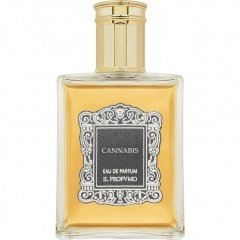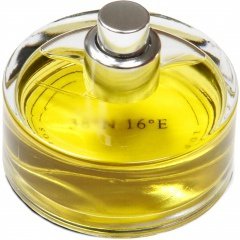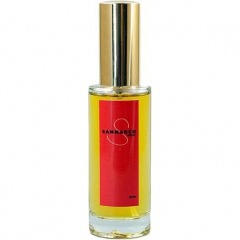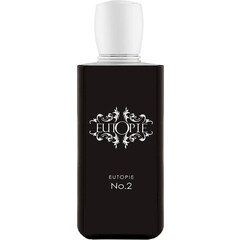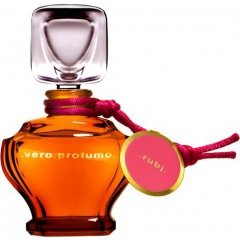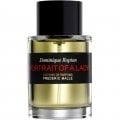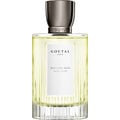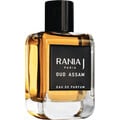
MiaTrost
Reviews
Filter & sort
All Sizzle No Steak
If your are looking for anything remotely resemblant of marihuana, you won't find it in Cannabis.
Instead, the fragrance borrows from Jungle L'Éléphant with its attempt to pack a punch of spice into amber. Sweet spiciness is the common denominator but less radiant and beaming than Ropion achieved in his stunning creation. Cannabis is a blurred and greenish, slightly off-key variation on the theme that fails to follow through with it.
I believe Signora Casoli explored coumarin's sweetish note of new-mown hay. It conjures the scent of tobacco and, due to its caramel overtones, can be meld with vanillic constituents; here it's a subtly floral amber. And that is where Cannabis forfeits its initial streak of peculiar potpourri and gets lost in bland soapy-powdery amber – in my book a drydown as dull as dishwater.
Instead, the fragrance borrows from Jungle L'Éléphant with its attempt to pack a punch of spice into amber. Sweet spiciness is the common denominator but less radiant and beaming than Ropion achieved in his stunning creation. Cannabis is a blurred and greenish, slightly off-key variation on the theme that fails to follow through with it.
I believe Signora Casoli explored coumarin's sweetish note of new-mown hay. It conjures the scent of tobacco and, due to its caramel overtones, can be meld with vanillic constituents; here it's a subtly floral amber. And that is where Cannabis forfeits its initial streak of peculiar potpourri and gets lost in bland soapy-powdery amber – in my book a drydown as dull as dishwater.
Premature ending in Calabria
Richard Lüscher Britos Terroir Perfumes are designed to tell an individual story of a specific place and capture a 'terroir'. 38°N 16°E (Reggio di Calabria) is an all-natural journey to Southern Italy's olfactory characteristics. For perfume lovers Calabria certainly is a synonym of bergamot and 38°N 16°E’s opening is all about this citrus fruit. Crisp and citrusy, the fragrance instantly evokes a vivid image of the green peel and its essential oil. Soon the scent of orange blossom blends in perfectly, sweetish fresh and mellow, without any indolic trait. Jean-Claude Richard created a simple yet stunningly beautiful top note which transitions seamlessly into an early and graceful heart. Sandalwood lends creamy smoothness but does not come across particularly woody.
Alas, to my nose at least, it fades all too soon at this stage. Although sandalwood usually is a superb fixative, it seems to fail in this composition. According to the notes list, the base has been bolstered up with frankincense. However, apart from a faint lemony-balsamic whiff I cannot detect any of its typical resinous and coniferous undertone, much to my disappointment. I would have liked a more pronounced frankincense presence. Thereby a lovely homage to the region's Byzantine heritage could have been embodied, representing a more consistent execution of 'terroir' in my opinion.
I sampled a couple of other Richard Lüscher Britos scents in EdP concentration and found diffusion impeccable and volume moderate. Hence, I think it possible that the rather flat and premature ending of 38°N 16°E may be owed to the EdT concentration at hand.
Alas, to my nose at least, it fades all too soon at this stage. Although sandalwood usually is a superb fixative, it seems to fail in this composition. According to the notes list, the base has been bolstered up with frankincense. However, apart from a faint lemony-balsamic whiff I cannot detect any of its typical resinous and coniferous undertone, much to my disappointment. I would have liked a more pronounced frankincense presence. Thereby a lovely homage to the region's Byzantine heritage could have been embodied, representing a more consistent execution of 'terroir' in my opinion.
I sampled a couple of other Richard Lüscher Britos scents in EdP concentration and found diffusion impeccable and volume moderate. Hence, I think it possible that the rather flat and premature ending of 38°N 16°E may be owed to the EdT concentration at hand.
2 Comments
Not as smooth as glass
Sammarco is an artisanal line that also caters to all those who want a custom made fragrance or wish to acquire some of the choicest and less available perfumery materials. Founder and perfumer Giovanni Sammarco values high quality ingredients and devotes his creations to showcasing their beauty.
Vitrum, initially created as a bespoke perfume for a journalist named Francesca, spans the gender spectrum easily. It revolves around vetiver, featuring its earthy, dry and flinty characteristics. Black pepper adds spiciness and, combined with a subdued rose that softens the austere demeanour, renders the composition more refined. After a harsh, if not unpolished, opening, it progresses into a respectable take on vetiver. Overall, Vitrum is surprisingly sheer, yet not at all without substance and lives up to its name. Still, a superb composition does not necessarily result from exquisite materials alone.
Out of the regular Sammarco range I prefer Vitrum but admittedly fail to appreciate the rave reviews.
Vitrum, initially created as a bespoke perfume for a journalist named Francesca, spans the gender spectrum easily. It revolves around vetiver, featuring its earthy, dry and flinty characteristics. Black pepper adds spiciness and, combined with a subdued rose that softens the austere demeanour, renders the composition more refined. After a harsh, if not unpolished, opening, it progresses into a respectable take on vetiver. Overall, Vitrum is surprisingly sheer, yet not at all without substance and lives up to its name. Still, a superb composition does not necessarily result from exquisite materials alone.
Out of the regular Sammarco range I prefer Vitrum but admittedly fail to appreciate the rave reviews.
Floriental gone astray
The opening accord comes along with huge impact and tremendous diffusion. Spiced wood, wrapped up in a distinct, austere and leathery saffron, make for a dark and deep impression. A ubiquitous, self-assured entry, not shrill yet slightly pungent and intriguingly odd due to a vaguely medicinal side to it. The latter is reminiscent of a damp, leaf-covered forest floor, which emanates from the background. At the same time it strikes me as fruity, somewhat sweet and lush. It goes nicely with the resins and spiced wood that are to the fore.
Marketed as a floriental, Eutopie does not explicitly follow the oud-hype with this composition. Instead, Prakash Narayanan cleverly turned to bakhour, the Arabic name of scented wood chips, I learned, mainly agarwood, soaked in fragrant oils and mixed with other ingredients such as resin, ambergris, musk and sandalwood. This scented potpourri is burned in charcoal or incense burners to perfume home and clothing with the fragrant and rich smoke on special occasions.
No. 2 is less oud-centric than e.g. Xerjoff's nuclear Gao and the comparison ends with the addition of a restrained tobacco note. Progressing into a sleek heart, the rose adds tenderness. The flower continues to reveal more facets, featuring fruitiness and seizes on the spicy aspect but stays delicate. The fragrance never loses its iridescent introductory note, which settled down into a harmoniously fused, seamless formation. The deliberate Arabic borrowing sets it apart from fragrances such as Czech & Speake's Dark Rose, which is similar but less daring. Into the dry down a honeyed whiff I ascribe to the musk, rounds everything off. As can be expected from the accords, volume and tenacity are excellent.
The combination of rose, saffron and 'bakhour' may not be off the beaten track but that does not necessarily make it uninspired. This take on the theme is captivating, forging a ravishing bridge from wanton melodramatics to polished grace. Not in the least did I miss the ambery quality I had expect to find in a floriental.
Marketed as a floriental, Eutopie does not explicitly follow the oud-hype with this composition. Instead, Prakash Narayanan cleverly turned to bakhour, the Arabic name of scented wood chips, I learned, mainly agarwood, soaked in fragrant oils and mixed with other ingredients such as resin, ambergris, musk and sandalwood. This scented potpourri is burned in charcoal or incense burners to perfume home and clothing with the fragrant and rich smoke on special occasions.
No. 2 is less oud-centric than e.g. Xerjoff's nuclear Gao and the comparison ends with the addition of a restrained tobacco note. Progressing into a sleek heart, the rose adds tenderness. The flower continues to reveal more facets, featuring fruitiness and seizes on the spicy aspect but stays delicate. The fragrance never loses its iridescent introductory note, which settled down into a harmoniously fused, seamless formation. The deliberate Arabic borrowing sets it apart from fragrances such as Czech & Speake's Dark Rose, which is similar but less daring. Into the dry down a honeyed whiff I ascribe to the musk, rounds everything off. As can be expected from the accords, volume and tenacity are excellent.
The combination of rose, saffron and 'bakhour' may not be off the beaten track but that does not necessarily make it uninspired. This take on the theme is captivating, forging a ravishing bridge from wanton melodramatics to polished grace. Not in the least did I miss the ambery quality I had expect to find in a floriental.
Beguiling Decay
Trained at the Cinquième Sens, Vero Kern came to perfumery as fully fledged woman with a background in pharmacy and aromatherapy. As declared admirer of classical french perfumery, she apparently takes her inspiration from that original concept and does not shy away from an edgy animalic translation into the present. Enter Rubj extrait. It opens with a succulent burst of mandarin, framed by greenish neroli. A hauntingly beautiful terzet of jasmine, orange blossom and tuberose, taking center stage in turns, swiftly follows suit. The verdant trait becomes saline, morphing into plummy. Civet provides a superb fruity finish, which is tweaked by the indolic triad into a vibe of decay, suggesting overripe fruit. That vaguely plastic-waxy sensation evokes a bizarre impression I thoroughly enjoy. Sultry decay is the extrait’s opulent main theme.
The base is delicately shored up by slightly scorched cedarwood that is paired off with a subtle dose of oakmoss. By this means, Rubj displays a dry and tangy twist that leaves me longing for a more pronounced contrast to its lush creaminess. The restrained musk is fused in seamlessly and smoulders in the background, daubed with ambrette I imagine. It oscillates from woody-earthy austerity to savoury-balmy warmth as Vero Kern pulls off its entire claviature truly artfully. Rubj's overall performance leaves nothing to be desired.
If any of the above Charites are your cup of tea, do not miss out on the extrait. Its weirdness is enticing and I appreciate why so many are in raptures about this fruity-floral composition.
The notes of the Eau de Parfum differ and critics vary. Although still structured around a floral heart, it is much greener and features less stressed indolic notes.
The base is delicately shored up by slightly scorched cedarwood that is paired off with a subtle dose of oakmoss. By this means, Rubj displays a dry and tangy twist that leaves me longing for a more pronounced contrast to its lush creaminess. The restrained musk is fused in seamlessly and smoulders in the background, daubed with ambrette I imagine. It oscillates from woody-earthy austerity to savoury-balmy warmth as Vero Kern pulls off its entire claviature truly artfully. Rubj's overall performance leaves nothing to be desired.
If any of the above Charites are your cup of tea, do not miss out on the extrait. Its weirdness is enticing and I appreciate why so many are in raptures about this fruity-floral composition.
The notes of the Eau de Parfum differ and critics vary. Although still structured around a floral heart, it is much greener and features less stressed indolic notes.
2 Comments

 MiaTrost
MiaTrost